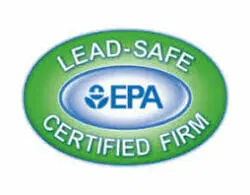Exterior painting is one of the best ways to improve the appearance of your home. A fresh coat of paint can add curb appeal and protect your home from weather damage. However, to achieve a successful painting project, there are a lot of things you need to decide upon firsthand. First, you need to decide on colors. Then, you need to think about whether you will do it yourself or hire someone to paint your exterior for you. But don’t despair, we’ve prepared a list of things to consider to prepare your home for exterior painting.
Steps to Prepare Your Home for Exterior Painting
Clean the Exterior Surfaces
Before you get to painting, it’s crucial to clean the exterior surfaces to remove dirt, dust, and debris. Preparation is the key to a successful home improvement project. Pressure washing is a good way to clean the walls, but ensure you have the proper pressure settings to avoid any damage. You need to know what pressure works best on different types of exteriors.
Alternatively, if you don’t have a pressure washer, you can use a hose and a soft-bristle brush to scrub the walls. It’ll be a little more time-consuming and labor-intensive, but it will provide you with clean surfaces that are perfectly prepared for painting. Lastly, cleaning the gutters, downspouts, and the surrounding landscaping is important to prevent dirt from splashing onto the walls during painting.
Repair Damages
Inspect your exterior surfaces for any damages such as cracks, holes, or rotted wood. It’s incredibly important to repair any damages to ensure a smooth surface for painting. Fill in cracks and holes with caulk or spackle, and replace any rotted wood with new boards. If there is any loose or peeling paint, scrape it off and sand the surface to create a smooth finish.
Protect Surrounding Areas
Cover the surrounding areas such as windows, doors, and landscaping with drop cloths or plastic sheeting to protect them from paint splatters. Use painter’s tape to cover any areas that should not be painted, such as hardware, light fixtures, and electrical outlets.
Prime Surfaces
If your surfaces are bare or have been stripped of paint, it’s important to prime the surface before painting. Primer helps to create a smooth surface for painting, improves adhesion, and enhances the durability of the paint. Primer will also come in handy if you are choosing to repaint your walls with a lighter color. It’ll help neutralize the walls to allow the true color of your new paint to shine through. Choose a primer that is compatible with the paint you’ll be using and apply it evenly to the surface.
Choose the Right Paint
It goes without saying that you need to choose a high-quality paint that is formulated for exterior use. Exterior paint is designed to withstand harsh weather conditions such as rain, snow, and sunlight. Look for a paint resistant to fading, chalking, and peeling. The paint you choose should also be compatible with the primer you’ve used.
Use the Right Tools
Using the right tools is essential to achieve professional-looking painted siding. Use a high-quality brush, roller, or sprayer to apply the paint evenly. Choose a brush or roller that is appropriate for the surface you’ll be painting on. For instance, a 3-inch brush is ideal for painting trim, while a 9-inch roller is better suited for larger surfaces.
Apply the Paint
If you’re looking for a professional tip on how to apply paint, this is it – start at the top and work your way down. This allows you to catch any drips or runs as you go. Use long, even strokes and apply the paint in thin layers. Avoid overloading the brush or roller with paint, as this can lead to drips and runs. It’s also essential to work in small sections to make sure that the paint doesn’t dry before you have a chance to smooth it out.
Give the Paint Time to Dry
Allow the paint to dry completely before applying a second coat. The drying time will depend on the type of paint you’re using and the weather conditions. Follow the manufacturer’s instructions for drying time and avoid painting in humid or rainy weather. Too much humidity and too much cold can affect how the paint dries. If you’re applying multiple coats, make sure each layer is completely dry before applying the next. Depending on the paint you use, it’ll take between 2-24 hours before you can apply a second coat.
Clean Up
After you’ve finished painting, clean up any tools or equipment. Dispose of any leftover paint or materials according to your local regulations. Remove the drop cloths or plastic sheeting and carefully remove the painter’s tape to avoid damaging the newly painted surface. There are a lot of environmentally friendly products to choose from, so this might be something you want to look into.
Let Tar Heel Painters Help You Transform Your Home
Tar Heel Painters can provide you with reliable exterior house painting services. We offer both residential and commercial painting services, as well as cabinet painting and pressure washing. We are a one-stop shop for all your painting needs.
If you are in Chapel Hill, Greensboro, Wilmington, Durham, or High Point, give our house painting experts a call for a FREE ESTIMATE.
Schedule a consultation TODAY at (336) 502-8707.





